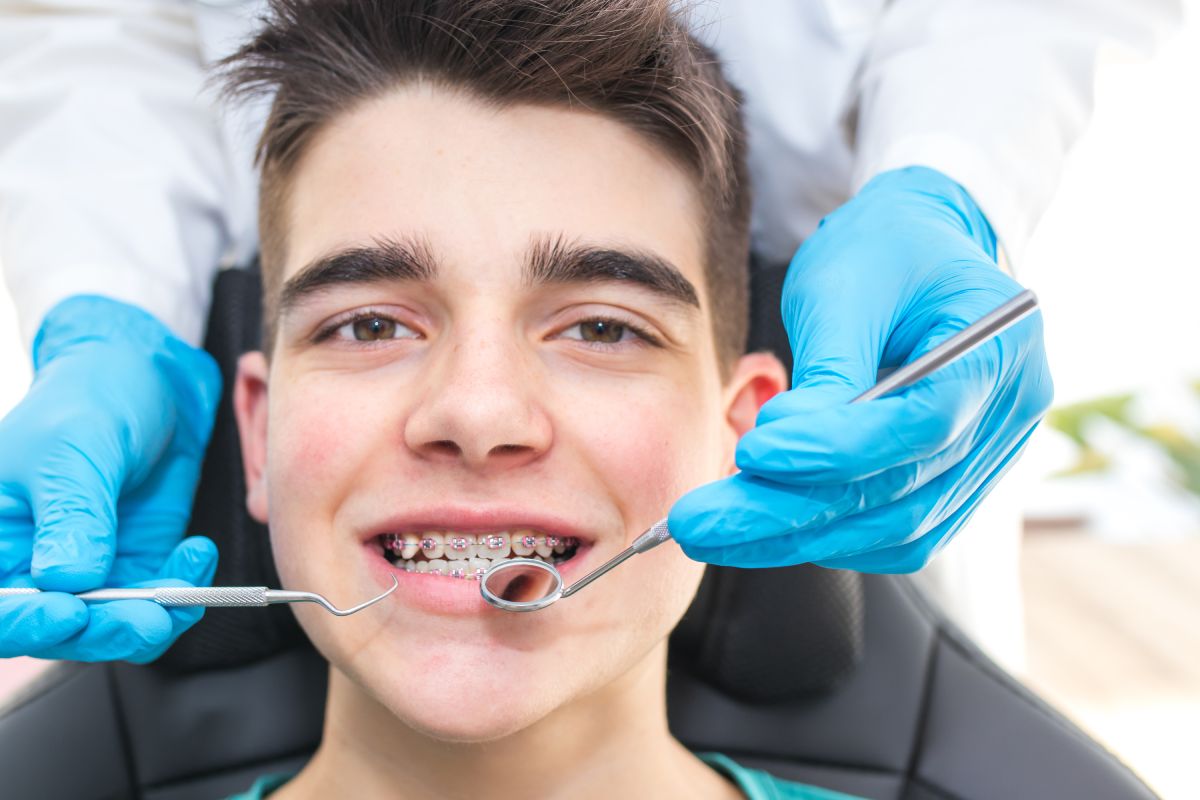Everything about Causey Orthodontics
Everything about Causey Orthodontics
Blog Article
Some Known Questions About Causey Orthodontics.
Table of ContentsThe 7-Minute Rule for Causey OrthodonticsSome Ideas on Causey Orthodontics You Should Know10 Simple Techniques For Causey OrthodonticsThe smart Trick of Causey Orthodontics That Nobody is Talking AboutAll About Causey Orthodontics
Neglecting occlusal connections, it was regular to get rid of teeth for a range of oral issues, such as malalignment or overcrowding. The idea of an intact teeth was not commonly appreciated in those days, making bite relationships seem pointless. In the late 1800s, the idea of occlusion was necessary for creating dependable prosthetic substitute teeth.As these ideas of prosthetic occlusion progressed, it came to be a very useful device for dentistry. It was in 1890 that the job and influence of Dr. Edwards H. Angle began to be felt, with his payment to contemporary orthodontics specifically notable. Focused on prosthodontics, he educated in Pennsylvania and Minnesota prior to guiding his interest towards dental occlusion and the therapies needed to preserve it as a regular condition, hence becoming understood as the "daddy of modern-day orthodontics".

The concept of optimal occlusion, as proposed by Angle and integrated into a classification system, enabled a change in the direction of dealing with malocclusion, which is any type of discrepancy from normal occlusion. Having a complete collection of teeth on both arches was highly searched for in orthodontic treatment as a result of the demand for specific partnerships between them.
The Of Causey Orthodontics
As occlusion ended up being the key top priority, facial percentages and appearances were ignored - orthodontist near me. To accomplish ideal occlusals without utilizing external forces, Angle postulated that having ideal occlusion was the finest method to gain optimum face visual appeals. With the passing away of time, it became quite obvious that also an exceptional occlusion was not appropriate when taken into consideration from an aesthetic viewpoint
It came to be evident that orthodontic therapy could readjust mandibular growth, resulting in the formation of practical jaw orthopedics in Europe and extraoral force steps in the United States. These days, both practical home appliances and extraoral devices are applied around the globe with the objective of modifying development patterns and types. Pursuing real, or at least boosted, jaw partnerships had actually come to be the primary goal of treatment by the mid-20th century.
Some Known Factual Statements About Causey Orthodontics
 The American Journal of Orthodontics was created for this objective in 1915; before it, there were no clinical objectives to comply with, nor any kind of exact classification system and brackets that did not have functions. Until the mid-1970s, braces were made by wrapping steel around each tooth. With developments in adhesives, it ended up being feasible to rather bond metal braces to the teeth.
The American Journal of Orthodontics was created for this objective in 1915; before it, there were no clinical objectives to comply with, nor any kind of exact classification system and brackets that did not have functions. Until the mid-1970s, braces were made by wrapping steel around each tooth. With developments in adhesives, it ended up being feasible to rather bond metal braces to the teeth.This has actually had purposeful effects on orthodontic therapies that are carried out regularly, and these are: 1. Appropriate interarchal connections 2. Appropriate crown angulation (tip) 3.
The benefit of the design hinges on its bracket and archwire mix, which needs only marginal cord bending from the orthodontist or clinician (best orthodontist). It's appropriately called after this feature: the angle of the port and density of the bracket base eventually determine where each tooth is positioned with little requirement for additional control
More About Causey Orthodontics
Both of these systems utilized similar braces for each and every tooth and necessitated the flexing of an archwire in three planes for situating teeth in their wanted positions, with these bends determining supreme placements. When it involves orthodontic home appliances, they are divided into 2 types: removable and repaired. Removable appliances can be handled and off by the patient as called for.

Therefore, nearly all contemporary set appliances can be considered variants on this edgewise appliance system. Early 20th-century orthodontist Edward Angle made a major contribution to the globe of dentistry. He produced 4 distinctive home appliance systems that have been used as the basis for many orthodontic treatments today, barring a few exemptions.
The Of Causey Orthodontics

The cable finished in a thread, and to relocate ahead, a flexible nut was used, which enabled a boost in circumference. By ligation, each individual tooth was affixed to this large archwire (emergency orthodontist near me). Because of its restricted series of motion, Angle was not able to accomplish accurate tooth positioning with an E-arch
These tubes held a soldered pin, which might be repositioned at each appointment in order to relocate them in position. Referred to as the "bone-growing appliance", this contraption was supposed to encourage much healthier bone growth due to its capacity for moving pressure straight to the origins. Nevertheless, implementing it confirmed bothersome actually.
Report this page